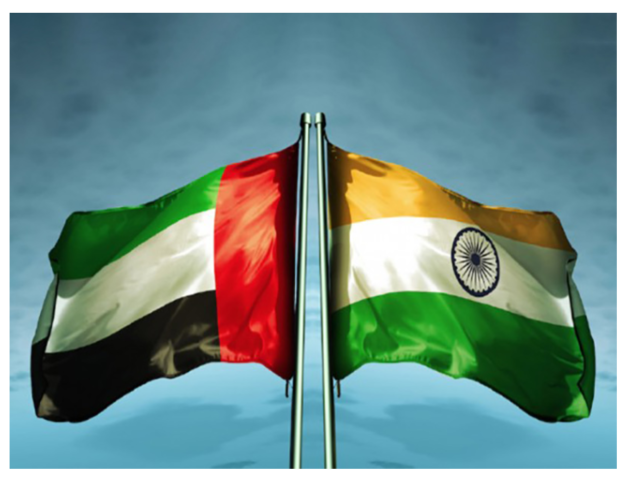Article by Syed Abid from Economics Wing, GAEE JMI
Globalization produces high-yielding results in any country, primarily by removing tariff barriers and opening up new avenues of development for either country. It also allows people to explore new cultures and makes it easier for them to access their practices in terms of food, music, art, and so on.
Technology travels faster from one country to another as a result of trade agreements. In addition, product prices of several companies fall as a result of globalization as it catalyses excessive competition as a result of trade, resulting in the availability of various substitutes for people.
Globalization provides the greatest benefit to developing countries—resulting in a significant improvement in their standard of living. These countries experience a decrease in poverty and an increase in per capita income. According to the World Bank, extreme poverty has declined rapidly, particularly since 1990.
UAE-INDIA RELATIONS
Globalization has proven to be advantageous to India as well. The trade agreement between India and the UAE exemplifies its effectiveness. Moreover, the relationship between the UAE and India has always been exemplary—the two countries share cultural, economic, and political ties. Millions of Indian citizens live in the UAE and constitute the country’s largest migrant group.

Journalist Ravi S Jha stated in an article for the ‘Khaleej Times,’ a daily English newspaper in Dubai, UAE, that the UAE accounts for 6% of India’s global exports and nearly $44.5 billion in trade was achieved between the two countries in 2008-09. It eventually increased to 20% as India’s exports increased by 7%, while the UAE increased their exports by 37% in later years.
THE CEPA
In addition, on February 18, 2022, India and the UAE signed a Comprehensive Economic Partnership Agreement (CEPA). CEPA is a free trade agreement or a double bilateral non-oil trade that aims to increase non-oil trade from $60 billion to $100 billion in five years. This trade agreement is expected to benefit both countries’ economies by ensuring growth, exports, and job creation.

India’s Finance Minister, Nirmala Sitaraman, stated that this agreement will serve as a gateway for India to the Gulf and African countries. Statistics suggest that they will add $9 billion, or about 1.7%, to their GDP by 2030. UAW will also experience an increase in their exports to India by 1.5%, or around $7.6 billion, and its imports to Gulf states by $14.3 billion, or 3.8%, by the end of 2030. This agreement will also generate 1,40,000 skilled jobs in the UAE within this time frame, i.e. by the end of 2030.
“We will continue to encourage talented people to the UAE, and there will be flexibility over visas in priority sectors for people to come and work with us,” said Thani Al Zeyoudi, the UAE’s minister of state for foreign trade.
IMPLICATIONS OF THE DEAL
The United Arab Emirates will benefit significantly from this agreement as well, such as the elimination of tariffs on various commodities such as aluminium, steel, copper, and so on. Additionally, significant tariffs have been removed from approximately 80% of the commodities.
This agreement includes anti-dumping and origin rules to protect manufacturers. Furthermore, one shared benefit of this agreement is that businesspeople from both countries will be able to compete for various government projects and contracts. With the conclusion of this agreement, India made a wise move, as the country has been looking for a trade agreement since its exit from the pan-Asian RCEP agreement.
India has also imposed duty concessions on gold imported from the UAE. In exchange, Indian jewellers will have duty-free access to the UAE market. India expects to create tens of thousands of jobs in labour-intensive industries such as textiles, gems and jewellery, leather, footwear, pharma, agricultural products, medical devices, sports goods, and automobiles.
It is advantageous to the goods sector as well as to the service sector. CEPA encompasses 11 service sectors and over 100 sub-sectors, including business services, telecommunications, construction, education, tourism, nursing, finance, etc.
This deal is quite extensive, with long-term implications for both economies. There are a few drawbacks to this agreement. One major reason is that the UAE has a healthy relationship with India, and both countries have been there for each other whenever a crisis has arisen. In addition, after the establishment of the federation in 1971, India-UAE relations flourished.
Article summary:
This article analyses the various implications and facets of the India-UAE free trade agreement, beginning with the advent of globalization and its effects. The author has concisely listed out the basics of the deal, the impact it is bound to create, the objectives it was formulated on, and the testimonies eminent individuals have brought to the fore regarding the deal. We’ve just solved your problem if you’ve been looking for a detailed yet concise read on the India-UAE free trade agreement/CEPA.
Syed Abid is a B.A.(Hons.) Economics student at Jamia Millia Islamia, Delhi, and a part GAEE JMI, an autonomous branch of Global Association of Economics Education in India. The views expressed are personal and they do not purport to reflect the opinions or views of GAEE or its members.
Follow Us & Stay Tuned: https://linktr.ee/gaee.jmi


Recent Comments